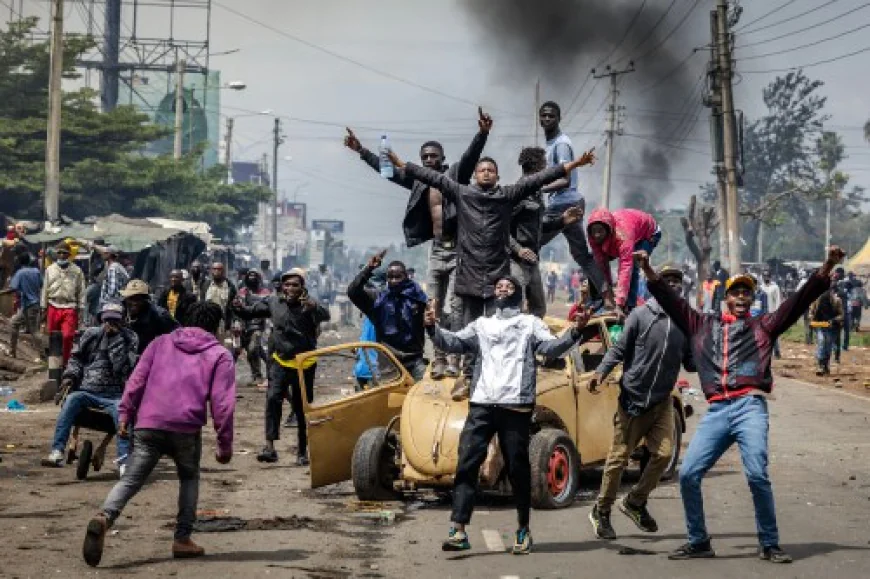Inside Kenya’s Saba Saba Protests: Anger Over Taxes, Police Brutality Leaves Dozens Dead
At least 31 people have died and over 530 have been arrested following the Saba Saba anti-government protests in Kenya. Marking the 35th anniversary of the original pro-democracy Saba Saba movement, this year’s demonstrations were driven by youth anger over police brutality, economic hardship, and unpopular tax hikes in the Finance Bill. The death of blogger Albert Ojwang in police custody acted as a catalyst for the unrest. The protests, largely led by Gen Z activists, turned violent as security forces used live ammunition and tear gas to disperse crowds, leading to widespread casualties and vandalism of public property, including hospitals. Human rights groups and opposition leaders have condemned the excessive use of force and demanded accountability. The aftermath of the protests highlights deep-seated frustrations among Kenya’s youth and growing calls for political and police reform, echoing the same demands made three decades ago during the original Saba Saba uprising.

At Least 31 Dead, 532 Arrested in Kenya’s Deadly Saba Saba Anti-Government Protests
Nairobi, Kenya — At least 31 people have died and more than 530 have been arrested across Kenya following the largest wave of anti-government protests the country has seen in recent years. The deadly demonstrations coincided with the 35th anniversary of the original Saba Saba movement, which in 1990 marked a turning point for Kenya’s fight for multi-party democracy.
What Sparked the Latest Protests
The fresh wave of anger was ignited by the alleged death in police custody of popular blogger Albert Ojwang in early June. His death, which many see as yet another case of police brutality gone unchecked, tapped into growing frustrations among young Kenyans already burdened by economic hardship, surging taxes, and lack of jobs.
This year’s protests were largely led by Gen Z activists i.e students, young professionals, and unemployed youth who have organized via social media without clear political affiliation. Many of them say they feel betrayed by the government’s failure to deliver on promises of economic relief.
“We are tired of empty promises. We want jobs, dignity, and we want an end to police killings,” said Esther Nyambura, a university student who joined the demonstrations in Nairobi.
Deadly Crackdown as Police Fire Live Bullets
Protests erupted nationwide on July 7th in cities including Nairobi, Kisumu, Eldoret, and Nakuru. Clashes between demonstrators and police turned violent, with officers accused of firing live ammunition into crowds, beating protesters, and storming hospitals that offered medical care to the injured.
Kenya’s National Human Rights Commission (KNCHR) confirmed the death toll at 31, describing it as the bloodiest single day of unrest since the country’s disputed election protests years ago. In total, more than 532 protesters have been arrested according to official police figures, with dozens of others injured.
Property damage has also been reported in some areas, with supermarkets, petrol stations, and clinics vandalized or looted amid the chaos.
A Painful Echo of History
The date of the protests was highly symbolic: July 7, known as Saba Saba (Seven Seven), commemorates the 1990 uprising that forced the then one-party state to adopt multi-party democracy. Many see parallels between that historic struggle and the current calls for government accountability and systemic reform.
“It’s sad that 35 years later, young people are still dying at the hands of the police for demanding their rights,” said veteran human rights campaigner Maina Mwangi.
Aftermath: Demands for Justice and Reform
Opposition leaders, civil society groups, and international observers have condemned the Kenyan government’s heavy-handed response. The United Nations has called for an independent investigation into allegations of extrajudicial killings, abductions, and police working with criminal gangs to suppress protests.
Meanwhile, the protesters are not backing down. Many vow to keep pushing for the repeal of the unpopular Finance Bill that imposed new taxes, and for deep police reforms to address decades of brutality and corruption.
What Lies Ahead
President William Ruto’s government faces mounting pressure to address the root causes of the unrest—high youth unemployment, economic inequality, and systemic police abuse. Failure to act, analysts warn, could lead to further protests and political instability.
As Kenya grapples with the aftermath of Saba Saba 2025, the voices of its young generation are clearer than ever: the fight for justice, accountability, and a better future is far from over.
Source:
Reuters.com
AP News
TheTimes.com


